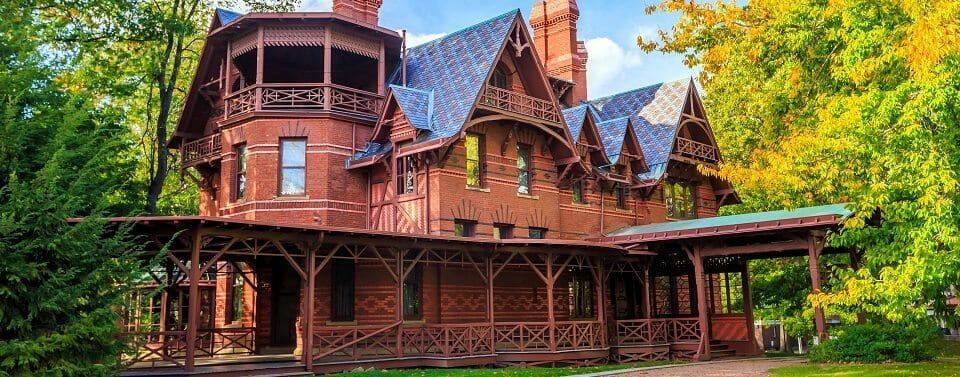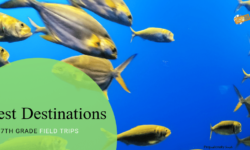The first year of high school is often the hardest, socially and academically, as the change of pace from middle school is sometimes difficult to accept. Field trips, however, should not fall off the face of the curriculum map just because the students have moved into high school. Educational adventures are an excellent way to open up new avenues of learning, of reaching difficult students and promoting new interests, passions, and perhaps potential career paths. So whether you're a parent, teacher, or travel-hungry 9th grader, before you give up on field trips forever, take a look at these choices for the best destinations below.
High school, as you undoubtedly know, no longer has one teacher per grade level but one teacher per subject (or multiple, as the case may be). This makes the destination and itinerary choosing that much simpler as you can focus on a particular subject or, better yet, a specific concentration. Lucky for you, this great country has more museums than McDonald's and Starbucks locations combined and a multitude of incredible cities in which to see them!
Art - Watching as young students see a Van Gogh or Monet for the first time in person, watch the wonder and awe dawn on their faces, is a wonderful thing. Art spans all of recorded human history, from cave paintings to film and digital design. Art tells a story that everyone can hear if they understand the language and are given the opportunity. Give your students the opportunity by taking your class trip to the best art museums in the country, such as the Met in New York which includes several floors of art from nearly every era, culture, and medium. Explore ancient history with ceremonial objects and sarcophagi, Asian and African history through painted works and sculptures, and the most famous of European masters and American greats into the contemporary movement. No matter where your school is situated, there is bound to be an art gallery or museum within driving distance.
Science - The best science-related attractions have always been science museums, the perfect collection of experiments and explanations in one interactive place. Many science museums gear toward children though there are museums with a higher learning bent, such as the Boston Museum of Science and its onsite Hayden Planetarium. The Museum of Science and Industry in Chicago, also, is a fantastic option as the largest museum of its kind in the Western Hemisphere and an incredible number of life-size constructions, interactive exhibits, and even one of the only WWII German U-boats in America. You have your pick of museums all over the country but you also have the option of teaching in the wide-open wilderness at national and state parks. The intense beauty of untouched nature is an easy classroom for classes of biology, geology, life science, and more.
History - This one's a no brainer. There are countless places around the U.S. filled with history, over a number of eras. If you want colonial history, New England is your best bet. For Civil War history, the American South moving into the East Coast, though there are points of interest in the Midwest as well. Native American history is best learned in Oklahoma, the Southwest, and the Western states of Montana, Wyoming, and Colorado. Moving still westward, travel to California for gold rush history starting in Sacramento or move southward to San Francisco to learn about immigration, cultural history, and more. New York City, furthermore, was the original capital of the United States, the site of many Revolutionary War battles, and was the location of the largest immigration movement, welcoming in millions of new Americans through Ellis Island. Whatever your history focus maybe, you'll find a destination in the U.S. to help teach your 9th-grade students.
Math & Finance - Math doesn't have to be a chore, even for reluctant students. High schoolers on math-fueled field trips may learn better if the information was divulged in a more appealing light, fun and inviting. Many amusement parks, including Six Flags and Cedar Point, offer Math and Science Days where only school class groups are invited to come inside and learn while they ride. Students will be given worksheets according to grade level and before they can ride certain rides, they have to solve math or science problems. If this doesn't seem focused enough, why not take them to visit Wall Street and the New York Stock Exchange? There is a multitude of places in New York City, the financial capital of the U.S., that welcome in student tours including the Federal Reserve. Here, take a look at the vault filled with an incredible number of solid gold bars, learn about the bank's operations and how they, together with the government, set the value to the dollar, and much more!
English & Literature - The written word is a powerful tool, able to strike any emotion in the hearts of men, change history, and effect great change. Literature is incredibly significant, on par with traditional art and even history. What's even better is that many of the world's greatest authors lived and wrote in the United States. Their mark is on every city they touched, their houses preserved, and their works kept safe in museums for interested eyes. The Harry Ransom Center in Austin, Texas, is an excellent place to start, with a mind-blowing collection of the first edition works including even a Gutenberg Bible as well as collected works by the Bronte family, Thomas Hardy, Lewis Carroll, and so many others. Of course, there are also homes and museums open for visits such as William Faulkner's Rowan Oak in Mississippi, Emily Dickinson's home in Massachusetts, Edgar Allen Poe museums in both Richmond and Baltimore, and Ernest Hemingway's Key West home in Florida.

Hartford, CT- OCTOBER 15: The Mark Twain House and Museum on October 15, 2014. It was the home of Samuel Langhorne Clemens (a.k.a. Mark Twain) from 1874 to 1891 in Hartford, Connecticut. Shutterstock
World Culture - One spectacular thing about our melting pot culture, and there are many great things, is that it opens up the doors for multi-cultural interaction in a single country. The freedoms we're given as Americans allowed groups of immigrants to establish their own cities and districts according to their own cultural traditions and even design in some cases. In nearly every large city you'll encounter a Chinatown, Japantown or Little Tokyo, Little Italy, and so on. Visiting these havens for international custom helps students see and interact with a variety of people, learn about their home countries, and their cultures. Some of the most authentic and largest of these destinations include San Francisco's Chinatown, Los Angeles' Japantown, New York's Little Italy, and Greektown in Baltimore.






